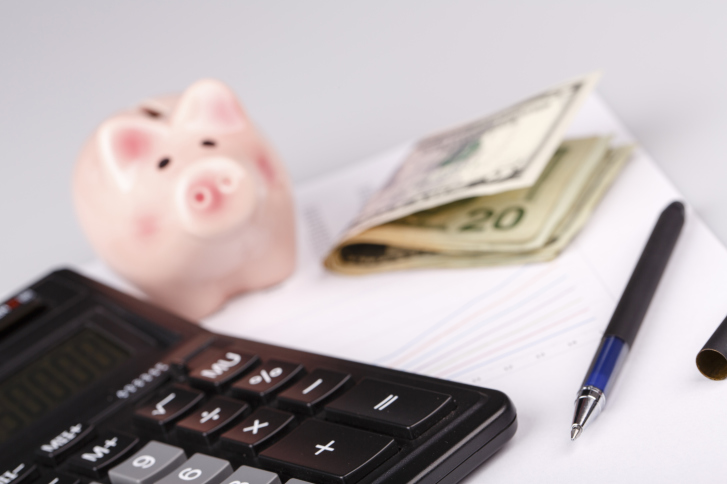If you often find yourself staring at your bank account and wondering where all your money has gone, you’re not alone. Many people live paycheck to paycheck, do not contribute to a savings account, or don’t set aside money for a rainy day—which means when something unexpected happens and you need more money than usual, you find yourself in a tough situation.
If this regularly happens to you, getting a better handle on your finances is imperative. If you don’t already know what you’re really spending and where your money is actually going, now is the time to start finding out.
Keeping a spending diary is a simple way to track your financial activity, and it can provide valuable insight into how and why you’re spending money. Once you understand where the money’s going and why, you can take steps to improve your financial situation, such as:
- Understanding what you’re spending money on, like your essential expenses (rent or mortgage payment, utility bills, car payment, etc.) and your discretionary expenses (a new outfit, restaurant meals). This can help you create a budget.
- Begin identifying ways you can cut your spending. For example, could you pack your lunch 4 days a week and enjoy lunch out once a week, or perhaps pick a less expensive cable package that has fewer channels? Implementing some of your ideas can lead to cost savings and more money in your bank account.
How to keep a spending diary
You don’t need anything fancy to get started—just a notebook and pen! In your notebook, keep a record of:
- What you bought
- The total price of what you bought (if buying something online, be sure to include shipping and handling in the cost)
- The date and time you bought it
- How you were feeling when you bought it
Remember to write down every purchase! Even if it was “just two bucks” for coffee at your favorite café, write it down. You’d be surprised how much those little purchases add up. In order to really get a handle on your finances, you need to have an accurate picture of exactly how and where you’re spending money.
In addition to listing purchases you make at stores, don’t forget to also list things like your monthly mortgage or rent payment, and the amounts of bills like your electric bill or cell phone bill. While you may not think of these things as “purchases,” you are still spending money on them; tracking them will help you see the full picture of what you are spending.
Identify your spending patterns
Review the information you record in your spending diary regularly and take note of patterns that you see. Are any of these patterns causing you financial stress or hardships—for example, do you notice that impulse purchases are taking a toll on your bank account, or are you upset because you’re routinely spending more than you had originally anticipated spending in certain areas? If so, dig deeper into the patterns and potential reasons associated with this behavior. For example…
- Are you more likely to make impulse buys during certain days or times of the day, or when you feel a certain way (sad, tired, hungry, etc.)?
- Are you more likely to buy things spur-of-the-moment when certain triggers occur, such as receiving a sale alert emailed to you by a store you like?
- Are large amounts of your money going to certain categories of purchases, and if so, can you begin thinking of any ways to reduce the amount of money you’re spending?
Get creative!
Once you’re aware of your habits and patterns, you can think of ways to outsmart the part of yourself that is susceptible to making financial decisions that may feel good in the moment, but ultimately hurt you and diminish your financial wellness. Here are a few examples of ways you can begin to change the behaviors and feelings behind spending money.
If you know you are more likely to shop in the first hour or two after you get home from work, distract yourself. Instead of stopping at the mall on your way home, or engaging in online shopping on your home computer, go straight home and busy yourself with an activity that is not related to shopping:
- Go for a walk or do a workout
- Bake a treat or cook a meal
- Call a friend or chat with your family
- Read a book or magazine
- Take a warm bath
- Or do any other activity you enjoy that will keep you occupied during that specific timeframe
If you know that receiving notifications about sales triggers your impulse to buy, you could unsubscribe so that you stop receiving email notifications from stores, or you could set up filters in your email system that direct messages from stores into a separate folder so that you do not see them constantly popping up in your main inbox folder.
If you notice you’re spending a lot of money at the grocery store and want to try to spend less, you could employ one or several of these strategies:
- Make a list before you go
- Don’t shop when you’re hungry
- Use coupons
- Choose items that are on sale first
- Pick items that are store brand instead of name-brand
There are many apps available that you can use to easily track your spending and budget more effectively, as well as help you establish—and meet—financial goals based on your real-time information. Apps to check out include Mint, PocketGuard and Wally.



